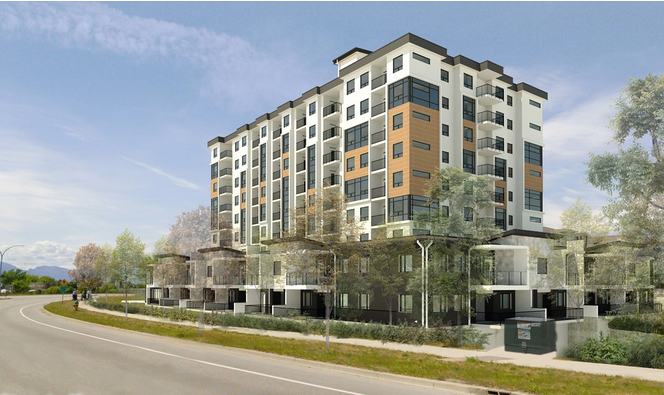Infotel Rob Munro
July 13, 2021
Led by councillor Luke Stack, Kelowna city council resisted a strong lobbying effort by eight Okanagan Lake waterfront land owners on Watt Road and designated their properties as future parkland. But it might take decades to buy and develop the land.
“If we really do believe that this is part of what we need as a community, we should have enough courage and stand up and say, 'this is what we need,'” Stack said near the end of an hour-long discussion over the land at city council's meeting Monday, July 12.
“What I think has happened here is that we have eight really vocal property owners who don’t want anything to change,” Mayor Colin Basran added. “This is an ideal spot for a future waterfront park – the connectivity and the proximity to a major urban centre – it just all makes sense. It’s a great beach.”
City staff are nearing the end of a years-long process to write a new Official Community Plan.
They decided the eight eight properties on Watt Road would make an ideal park because it has a sandy beach that is protected from erosion. It’s just north of the popular Boyce Gyro beach and south of a new Pandosy Waterfront Park that’s under construction at Cedar Avenue.
Information packages were sent to the eight property owners last fall, staff has met and talked with them since then. Given their strong opposition, staff took the matter to council yesterday suggesting the city only buy two of the lots and revisit the idea of buying all eight when it drafts a new parks plan some time in the future.
That sparked an intense lobbying effort by the property owners over the past weekend. They told councillors, among other things, that it would drastically reduce their property values, they were not properly informed about the proposed changes and that city staff threatened expropriation.
Staff told council they never made an expropriation threat but couldn’t rule out some future council deciding to go that route.
The designation means the property owners can develop their land any way they want under the current single-family zoning and don’t ever have to sell to the city.
It reminded Coun. Stack of the flack council took years ago over properties the city bought around Cedar Avenue when it proposed selling some of the land to pay for construction of the park. “We really had our feet held to the fire by many people in the community saying you guys are just not listening to the public,” Stack said. “'You’re not designating this the way it’s supposed to be. We demand, we demand all of this land to be park. Don’t even consider building something on it.'
“After we got thoroughly thrashed, we finally said 'OK.' The will of the public was: 'we want to protect these properties for parkland’ and that’s what we ultimately did, even though we knew we didn’t have the resources to build it. “Now I find we’re getting pressure to say: 'Don’t be transparent. Don’t put it on the table. Don’t let the community know these could be future parklands. We want to keep it off the table. We don’t want to discuss this stuff.' “I’m thinking, how can we do that. If we’re thinking this is what the community needs for our long-term growth in the Pandosy area, to ask us now to put this off the table for 20 more years, we don’t even want to talk about it, I think is completely disingenuous. I think we need to say, do we believe in acquiring quality property for the general public of our city. We know we’re growing. We know we’re going to need some of this.”
In the end, only Coun. Charlie Hodge – saying the consultation process was flawed – voted against designating all eight properties as future parkland.
Another parcel, on the east side of Watt Road, was also designated parkland to allow a connection to Walnut Avenue and the new Pandosy Waterfront Park. It’s estimated that it will cost $30 million at today’s prices to buy the nine properties. That’s usually done when they are put up for sale. Once one or two of the lots are purchased, it may be possible to develop those as parks and open the beach to public access but that’s a decision to be made in the future.
Right now, a retaining wall at the north end prevents public access along the shoreline.




 The project would have increased greenhouse gas emissions from vehicles being driven long distances, further stressed city roads, and saddled taxpayers with increased cost for municipal infrastructure, councillors said.
The project would have increased greenhouse gas emissions from vehicles being driven long distances, further stressed city roads, and saddled taxpayers with increased cost for municipal infrastructure, councillors said. 
